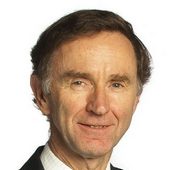Europe: The United States of Greater Austria?
Franz Ferdinand envisaged a reconstruction of the Austro-Hungarian empire. Could it have worked?
July 8, 2015

In all the debates about the EU’s origins, almost nobody is aware that there was an early proposal for regional integration in Europe – the proposed United States of Greater Austria.
Part I – Europe: The United States of Greater Austria?
Part II – The United States of Europe: Inspiration from India?
This idea was floated in a fascinating book by Aurel Popovici, a lawyer in a group around Franz Ferdinand, heir apparent to the Austrian throne, in 1906. It envisaged a reconstruction of the Austro-Hungarian empire into a group of 16 national states with a federal structure under a constitutional monarchy.
Could it have succeeded? We will never know. And yet, it offers a glimpse of an alternative future which might have been possible — had Franz Ferdinand not been assassinated on June 28th, 1914.
In all likelihood, such a United States of Greater Austria would not have been sustainable. The centrifugal forces would have been too strong.
The differences from the United States of America are significant. First, language politics would have been extremely complex.
The 1906 book devotes a whole section to the reasons why the federal official language would have to be German, but national languages would be used for all state level official business. Any solution to such an emotive question was probably doomed to be either inefficient or unstable or both.
The American advantage
America kept it simple: It decided to have just one national language, English, to be used officially at all levels throughout the Union.
America’s other big advantage, when compared with pre-First World War Austria-Hungary, was that at the time of the Founding Fathers, it was small and new.
Thirteen states with a total population of less than four million, two thirds of who originated from the British Isles, seemed like a very manageable project.
For all the infighting that even this small grouping generated, it paled against the huge political stress that Franz Ferdinand knew was building up in Austria-Hungary with its diverse population of over 50 million.
A century onward, at the European level today, the complexity of the management challenges is an order of magnitude greater than it was in fin de siècle Vienna.
